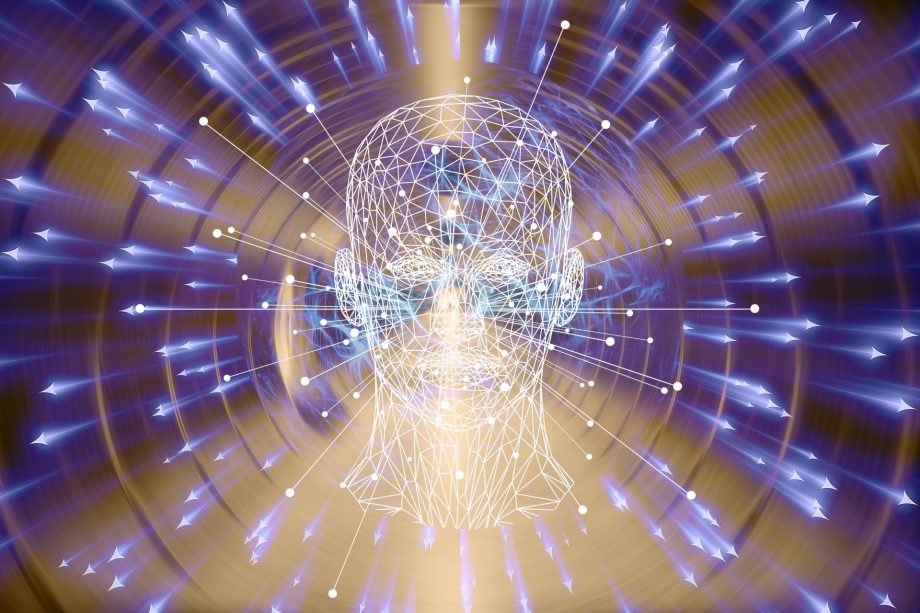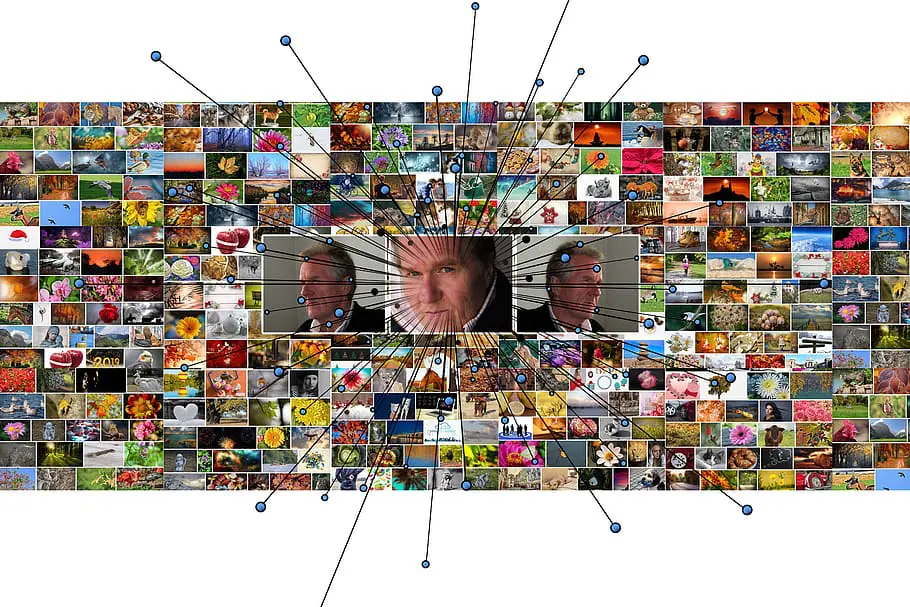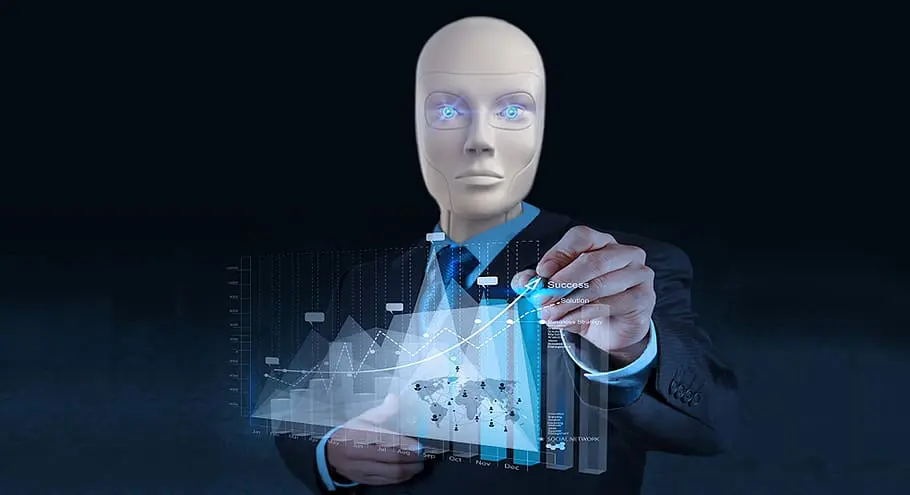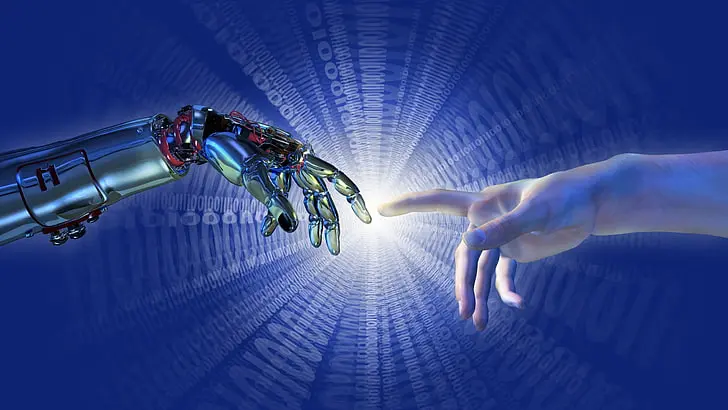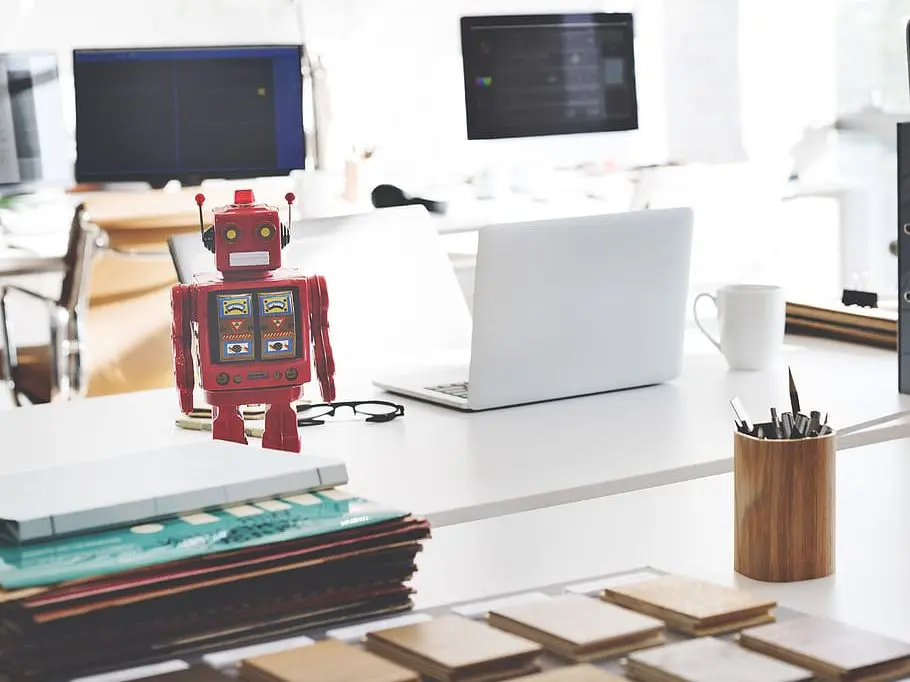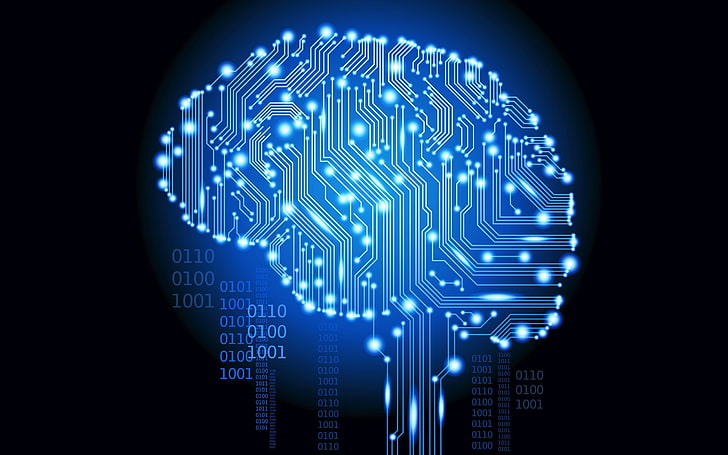
Is AI the same as Machine Learning? Discover the answer in our easy-to-understand guide. Dive into definitions, differences, and real-world applications.
Ever found yourself scratching your head, wondering, ‘Is AI the same as Machine Learning?’
Well, you’re not alone. It’s a common question that pops up whenever we dive into the fascinating world of technology.
In this friendly chat, we’ll unravel this tech mystery, breaking down the complex jargon into simple terms.
So, grab a cup of coffee, sit back, and let’s embark on this enlightening journey together.
Is AI The Same As Machine Learning?
Have you ever found yourself pondering, is AI the same as Machine Learning? If so, you’re in the right place!
This common question has sparked many a debate in the tech world, and today, we’re going to delve into it.
We’ll explore the ins and outs of Artificial Intelligence and Machine Learning, demystify their differences, and even take a peek into their exciting future.
We’ll also address some common misconceptions and answer frequently asked questions.
So, buckle up for an engaging and enlightening conversation that will make these complex concepts feel like a friendly chat!
Brief Overview of AI and Machine Learning
Let’s start with a quick overview. Artificial Intelligence, or AI, is like the big umbrella under which various technologies shelter and one of those technologies is Machine Learning.
AI is all about creating machines that can mimic human intelligence, making them capable of performing tasks that would usually require human intellect.
Think about recognizing speech, making decisions, or translating languages.
On the other hand, Machine Learning, often fondly referred to as ML, is a subset of AI.
It’s a method of data analysis and computer science that automates the building of analytical models.
In simpler terms, it’s all about giving computers the ability to learn and adapt through experience, much like how we humans do.
The Machine Learning model enables a computer system to find hidden insights without being explicitly programmed where to look.
Importance of Understanding the Difference
Now, you might be wondering, Why is it so important to understand the difference between AI and Machine Learning?
Well, despite being closely linked, they are not the same.
Understanding the difference is crucial, especially if you’re looking to implement these technologies in your business or even if you’re just keen on keeping up with the latest tech trends.
AI is the broader concept that covers anything related to making machines smart, whether it’s by rule-based systems or learning from scratch.
Machine Learning, however, is a specific approach to achieve AI, where machines are given access to data and use this data to learn for themselves.
Understanding this difference helps to demystify these technologies and gives us a clearer picture of how they can be utilized effectively.
It’s like knowing the difference between fruits and apples. While all apples are fruits, not all fruits are apples!
Similarly, while Machine Learning is a part of AI, AI doesn’t always involve Machine Learning.
So, as we dive deeper into this topic, remember this distinction.
It’s going to make understanding the world of AI and Machine Learning a whole lot easier!
Understanding Artificial Intelligence (AI)
Alright, now that we’ve set the stage, let’s dive a little deeper into the world of Artificial Intelligence.
It’s a term that’s been buzzing around for a while now, often conjuring images of futuristic robots and high-tech gadgets.
But what exactly is AI? How did it evolve? And what are its different categories?
Let’s embark on this journey of understanding AI, its history, and its real-world applications. Trust me, it’s going to be an exciting ride!
Definition of AI
Let’s start with the basics. Artificial Intelligence, or AI, is a branch of computer data science that aims to imbue software with the ability to analyze its environment using either predetermined rules and strategies or patterns in data to make decisions.
In essence, AI is all about creating machines that can mimic human intelligence, whether it’s recognizing speech, learning, planning, or problem-solving.
Brief History and Evolution of AI
Now, let’s hop into our time machine for a bit. The concept of AI isn’t new.
In fact, it dates back to ancient times, with myths and stories about artificial beings endowed with intelligence or consciousness by master craftsmen.
Fast forward to the 20th century, the term Artificial Intelligence was coined in 1956 by John McCarthy at the Dartmouth Conference, where the core mission of AI, creating machines as intelligent as humans was proposed.
Since then, AI has evolved from simple rule-based systems to complex machine learning and deep learning models, becoming an integral part of many industries.
Categories of AI:
Artificial Narrow Intelligence (ANI)
Artificial General Intelligence (AGI)
Artificial Super Intelligence (ASI)
AI can be categorized into three types: Artificial Narrow Intelligence (ANI), Artificial General Intelligence (AGI), and Artificial Super Intelligence (ASI).
ANI, also known as Weak AI, is designed to perform a narrow task like voice commands in your phone or recommendations in your music app.
AGI, or Strong AI, on the other hand, is a type of AI that has the capability to understand, learn, and apply its intelligence to any intellectual task that a human being can. It’s like a human brain in machine form.
Lastly, ASI is a future concept of AI that surpasses human intelligence and ability. It’s the kind of AI you see in sci-fi movies that can predict the future, solve complex problems, and essentially rule the world.
Real-World Applications of AI
AI is no longer just a futuristic concept. It’s here, and it’s already being used in many real-world applications.
From voice assistants like Siri and Alexa that make our lives easier to recommendation systems on Netflix and Amazon that know our preferences, to self-driving cars that are revolutionizing the automotive industry.
AI is everywhere. It’s also being used in healthcare for disease detection, in finance for fraud detection, and in many other industries.
The possibilities are endless, and we’re just scratching the surface of what AI can do!
Understanding Machine Learning (ML)
Having explored the vast universe of Artificial Intelligence, let’s now turn our attention to one of its most exciting galaxies, Machine Learning.
If AI is the grand dream of replicating human intelligence, Machine Learning is the magic wand making that dream come true.
But what exactly is Machine Learning? How does it work? And why is it so crucial in the realm of AI?
Let’s dive in and demystify these questions, and along the way, we’ll also discover some real-world applications of Machine Learning that are transforming our world.
Definition of ML
Let’s kick things off with a simple definition. Machine Learning, often abbreviated as ML, is a subset of AI that provides systems the ability to automatically learn and improve from experience without being explicitly programmed.
In a nutshell, it’s all about making computers learn from data so they can make decisions or predictions on their own.
It’s like teaching a child to learn from their experiences, only this time, the child is a computer!
How Machine Learning Works
So, how does Machine Learning work? Well, it’s all about patterns and inference.
Machine Learning algorithms use computational methods to “learn” information directly from data without relying on a predetermined equation as a model.
The algorithms adaptively improve their performance as the number of samples available for learning increases.
They sift through the data, learn from them, identify patterns, and make decisions or predictions.
It’s like a detective piecing together clues to solve a mystery!
Importance of Machine Learning in AI
Now, why is Machine Learning so important in AI? Well, Machine Learning is like the heart of AI.
It’s the method through which the ‘intelligence’ in AI is achieved. Without Machine Learning, computers would need to be explicitly programmed to perform every single task.
But with Machine Learning, computers can learn from data and make decisions or predictions on their own, making them ‘intelligent’.
It’s the difference between a manual car and an autonomous one!
Real-World Applications of Machine Learning
Machine Learning is not just a cool concept; it’s being used in a myriad of applications that affect our daily lives.
For instance, ever wondered how Netflix knows what shows you might like? Or how your email filters out spam? That’s Machine Learning in action!
From recommendation systems and speech recognition to fraud detection and medical diagnoses, Machine Learning is being used in various industries, making our lives easier and more efficient.
It’s like having a personal assistant who knows your preferences and can make informed decisions for you!
AI vs Machine Learning: The Differences
Now that we’ve got a handle on what AI and Machine Learning are, it’s time to address the elephant in the room. How are they different?
After all, they’re often used interchangeably, but as we’ve seen, they’re not quite the same.
So, let’s roll up our sleeves and delve into the distinctions between AI and Machine Learning.
We’ll explore how they differ in their approach, their usage of data, and their applications.
It’s like comparing apples and oranges and while they might both be fruit they have their unique characteristics!
AI as the Broader Concept
Let’s start with the big picture. Artificial Intelligence is the broader concept that encompasses all efforts to make machines smart, whether that’s a computer program playing chess, a voice-recognition system like Siri, or a self-driving car.
It’s like a big tree with many branches, each representing a different approach to achieving the goal of creating intelligent machines.
ML as a Subset of AI
Now, where does Machine Learning fit into this picture? Well, Machine Learning is one of those branches.
It’s a specific subset of AI that focuses on a particular way of achieving AI by letting machines learn from data.
So, while all Machine Learning is AI, not all AI is Machine Learning. It’s like saying all roses are flowers, but not all flowers are roses!
Differences in Learning and Data Usage
One of the key differences between AI and Machine Learning lies in how they learn and use data.
Traditional AI systems rely on hard-coded rules and heuristics, while Machine Learning systems learn from data.
In Machine Learning, algorithms learn from a set of data and make predictions or decisions without being explicitly programmed to perform the task.
It’s like the difference between learning to ride a bike by following a set of instructions versus learning by actually getting on the bike and practicing.
Differences in Applications and Capabilities
AI and Machine Learning also differ in their applications and capabilities.
While AI can be used to simulate human intelligence and perform a wide range of specific tasks, Machine Learning is specifically good at tasks where large amounts of data can be used to make predictions or decisions.
For example, AI is used in rule-based systems like expert systems in healthcare, while Machine Learning is used in predictive models like recommending products to online shoppers.
It’s like using a Swiss Army knife for various tasks versus using a specialized tool for a specific task. Both have their unique strengths and uses!
Deep Learning: Connecting AI and Machine Learning
Having explored the realms of AI and Machine Learning, it’s time to dive into the world of Deep Learning.
Think of Deep Learning as the bridge that connects AI and Machine Learning.
It’s a subset of Machine Learning that’s inspired by the structure of a human brain and has brought us closer to achieving the dream of creating machines that can mimic human intelligence.
But what exactly is Deep Learning? How does it fit into AI and Machine Learning? And why is it so important?
Let’s delve into these questions and uncover the fascinating world of Deep Learning.
Definition of Deep Learning
Let’s start with a simple definition. Deep Learning is a subset of Machine Learning that’s all about deep neural networks with several layers, hence the term ‘deep’.
These neural networks attempt to simulate the behavior of the human brain, albeit far from matching its ability to learn from large amounts of data.
While a neural network with a single layer can still make approximate predictions, additional hidden layers can help optimize the results.
It’s like peeling an onion – the more layers you peel, the closer you get to the core.
How Deep Learning Fits into AI and ML
Now, how does Deep Learning fit into the picture of AI and Machine Learning?
Well, as a subset of Machine Learning, Deep Learning is one of the techniques for implementing Machine Learning.
It uses multi-layered neural networks to learn from data. In the broader context of AI, Deep Learning algorithms are used to develop self-learning machines and systems that can learn and improve on their own.
It’s like a cog in the machine of AI, helping to drive the whole system forward.
Importance and Applications of Deep Learning
Deep Learning is crucial because it eliminates the need for manual feature extraction, allowing the model to learn features from data in an automated manner.
This is particularly useful when dealing with high-dimensional data, such as images, speech, and text.
The applications of Deep Learning are vast and exciting.
From voice assistants that understand and respond to natural speech, to chatbots that can understand context, to image recognition systems that can detect cancer in MRIs, Deep Learning is revolutionizing a wide range of industries.
It’s like having a super-smart assistant that can learn and adapt to complex tasks, making our lives easier and more efficient.
Common Misconceptions and Clarifications
As we journey through the realms of AI, Machine Learning, and Deep Learning, it’s easy to get tangled in a web of misconceptions.
After all, these are complex concepts that often overlap, leading to confusion and misunderstandings.
But don’t worry, we’re here to clear things up! In this section, we’ll tackle some common misconceptions head-on and provide clear, concise clarifications.
From the notion that AI and Machine Learning are the same, to the unique aspects of AI, ML, and Deep Learning, we’ll set the record straight.
So, let’s dive in and debunk some myths!
The misconception that AI and ML are the Same
One of the most common misconceptions is that AI and Machine Learning are the same.
It’s easy to see why this confusion arises. After all, both involve machines that can learn and make decisions.
However, as we’ve discussed earlier, while all Machine Learning is AI, not all AI is Machine Learning.
AI is the broad concept of machines being able to carry out tasks in a way that we would consider ‘smart’.
Machine Learning is a current application of AI that focuses on the development of programs that can access data and use it to learn for themselves.
Clarification of the Unique Aspects of AI, ML, and Deep Learning
Now, let’s clarify the unique aspects of AI, ML, and Deep Learning. AI, as we’ve discussed, is the broadest term, encompassing all efforts to make machines smart.
Machine Learning, on the other hand, is a subset of AI that focuses on using statistical techniques to enable machines to improve with experience.
Deep Learning, then, is a further subset of Machine Learning that uses multi-layered neural networks to learn from data.
Each of these fields, while interconnected, has its unique aspects and applications.
AI can range from simple rule-based systems to complex systems that use Machine Learning and Deep Learning.
Machine Learning, on the other hand, is specifically good at tasks where large amounts of historical data can be used to make predictions or decisions.
Deep Learning, a subset of artificial intelligence takes this a step further by using complex artificial neural networks to automate feature extraction from raw data, making it particularly effective for tasks like image and speech recognition.
So, while these terms are often used interchangeably, they each have their unique meanings and applications.
Understanding these differences is key to appreciating the incredible advancements in the field of artificial intelligence!
The Future of AI and Machine Learning
Having navigated the intricate world of AI, Machine Learning, and Deep Learning, let’s now turn our gaze to the horizon.
What does the future hold for these exciting fields? As we stand on the cusp of technological advancements that once seemed the stuff of science fiction, it’s fascinating to ponder the possibilities.
In this section, we’ll explore current trends in AI and Machine Learning and make some educated guesses about future developments.
So, let’s fasten our seatbelts and set off on this exciting journey into the future!
Current Trends in AI and ML
As we speak, AI and Machine Learning are already making waves in various industries.
One of the biggest trends is the increasing use of AI and ML in data analysis.
Businesses are leveraging these technologies to gain insights from their data and make informed decisions.
From predictive analytics to customer segmentation, AI and ML are transforming the way businesses operate.
Another trend is the rise of AI-powered automation. From self-driving cars to automated customer service, AI and ML are being used to automate a wide range of tasks, leading to increased efficiency and productivity.
AI and ML are also making strides in the field of healthcare, with applications ranging from disease detection and diagnosis to drug discovery and telemedicine.
The ongoing pandemic has only accelerated these trends, with AI and ML playing a crucial role in understanding and combating the virus.
Predictions for Future Developments
Looking ahead, the future of AI and Machine Learning is incredibly exciting.
As these technologies continue to evolve, we can expect them to become even more integrated into our daily lives.
One prediction is that we’ll see more personalized experiences thanks to AI and ML.
From personalized learning experiences in education to personalized recommendations in shopping, these technologies will help tailor experiences to individual needs and preferences.
Another prediction is the increased use of AI and ML in decision-making.
As these technologies become more sophisticated, they’ll be able to provide more accurate results and insightful predictions, aiding in everything from business decisions to healthcare diagnoses.
Lastly, as we continue to make advancements in AI and ML, we can expect to see new applications that we can’t even imagine today.
Just as the internet has transformed our lives in ways we couldn’t have imagined a few decades ago, AI and ML are set to usher in a new era of innovation and change. It’s an exciting time to be alive!
Exploring the Frontiers of AI: Key Concepts and Innovations
In the ever-evolving landscape of technology, data scientists are continuously exploring new data to enhance Artificial Intelligence systems.
One such advancement is in the field of Natural Language Processing (NLP). NLP, a subset of AI, enables machines to understand and respond to human language, paving the way for innovations like voice assistants and real-time translation services.
Another exciting development is in the realm of Reinforcement Learning. This type of Machine Learning allows an AI system to learn and improve from its experiences, much like a child learning to walk.
Through trial and error, and without the need for human intervention, the system learns to make optimal decisions to achieve a specific goal.
Unsupervised Learning, on the other hand, allows AI systems to learn from unlabelled data.
This is particularly useful when dealing with Big Data, where the volume, variety, and velocity of data make it impractical to manually label all the data.
Unsupervised Learning algorithms can identify patterns and structures in such data, providing valuable insights without the need for explicit guidance.
Facial Recognition is another field where AI is making significant strides.
By using a Deep Learning model, AI systems can now identify and verify individuals from a photo or video in real time. This technology is being used in various applications, from unlocking smartphones to enhancing security systems.
As we continue to harness the power of AI, the possibilities seem endless. With each new development, we’re moving closer to a future where AI systems can mimic human intelligence, and perhaps, even surpass it.
Is AI The Same As Machine Learning? FAQs
Throughout our journey into the world of AI and Machine Learning, you’ve probably had a few questions brewing.
Well, you’re in luck! In this section, we’ll tackle some of the most frequently asked questions about AI and Machine Learning.
From deciding whether to learn AI or Machine Learning, to understanding their differences and examples, we’ve got you covered.
So, let’s dive into these FAQs and quench your thirst for knowledge!
Q: Should I learn AI or machine learning?
A: That depends on your interests and career goals.
If you’re interested in a broad understanding of intelligent systems and want to explore various approaches to achieving this, including rule-based systems and robotics, then studying AI could be for you.
On the other hand, if you’re interested in statistical methods and using data to make predictions or decisions, then Machine Learning might be your cup of tea.
Remember, Machine Learning is a subset of AI, so studying Machine Learning will also give you a foundation in AI.
Q: Is machine learning not part of AI?
A: No, that’s a common misconception. Machine Learning is actually a subset of AI.
It’s one of the methods for achieving AI, where machines are given access to data and they use this data to learn for themselves.
So, while all Machine Learning is AI, not all AI involves Machine Learning.
Q: What is an example of AI vs ML?
A: Sure, let’s take the example of a recommendation system, like the one used by Netflix.
The system uses AI to recommend shows you might like based on your viewing history.
Now, the AI in this case is using Machine Learning to make these recommendations.
The Machine Learning algorithms analyze your viewing history, learn from it, and then make predictions about what you might like to watch.
So, the overall system is an example of AI, while the specific method it uses to make recommendations is an example of Machine Learning.
Q: What are the 3 types of AI?
A: AI can be categorized into three types: Artificial Narrow Intelligence (ANI), Artificial General Intelligence (AGI), and Artificial Super Intelligence (ASI). ANI, also known as Weak AI, is designed to perform a narrow task, like recommendations in your music app.
AGI, or Strong AI, is a type of AI that has the capability to understand, learn, and apply its intelligence to any intellectual task that a human being can.
Lastly, ASI is a future concept of AI that surpasses human intelligence and ability.
It’s the kind of AI you see in sci-fi movies that can predict the future, solve complex problems, and essentially rule the world.
Is AI The Same As Machine Learning? Conclusion
As we draw our exploration of AI and Machine Learning to a close, it’s time to take a moment to reflect on what we’ve learned.
From understanding the basic definitions of AI and Machine Learning to delving into their differences, applications, and future trends, we’ve covered a lot of ground.
In this concluding section, we’ll recap the main points and share some final thoughts on the importance of understanding the difference between AI and Machine Learning.
So, let’s wrap up this enlightening journey with a neat little bow!
Recap of the Main Points
Let’s take a quick stroll down memory lane. We started our journey by defining AI and Machine Learning.
We learned that AI is the broader concept of machines being able to carry out tasks in a way that we would consider ‘smart’, and Machine Learning is a subset of AI that focuses on the idea that machines should be able to learn and adapt through experience.
We then delved into the unique aspects of AI, ML, and Deep Learning, and understood that while they are interconnected, they each have their unique meanings and applications.
We also debunked the common misconception that AI and ML are the same.
We explored the current trends in AI and ML, such as the increasing use of these technologies in data analysis and automation, and looked ahead to the future, predicting more personalized experiences and increased use of AI and ML in decision-making.
Finally, we addressed some frequently asked questions, clarifying that studying AI or ML depends on one’s interests and career goals, and reaffirming that ML is indeed a part of AI.
Final Thoughts on the Importance of Understanding the Difference between AI and ML
Understanding the difference between AI and Machine Learning is not just a matter of semantics.
It’s crucial for understanding how these technologies work, how they’re evolving, and how they can be used effectively.
Whether you’re a business leader looking to implement these technologies, a student deciding what to study, or simply a curious individual trying to keep up with the latest tech trends, a clear understanding of AI and ML is invaluable.
As we continue to make strides in these fields, the distinction between AI and ML will become even more important.
So, keep learning, stay curious, and remember – while all Machine Learning is AI, not all AI is Machine Learning!
Read more: How AI Contributes to Sustainable Living

